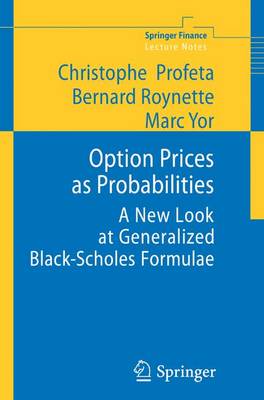Discovered in the seventies, Black-Scholes formula continues to play a central role in Mathematical Finance. We recall this formula. Let (B ,t? 0; F ,t? 0, P) - t t note a standard Brownian motion with B = 0, (F ,t? 0) being its natural ?ltra- 0 t t tion. Let E := exp B? ,t? 0 denote the exponential martingale associated t t 2 to (B ,t? 0). This martingale, also called geometric Brownian motion, is a model t to describe the evolution of prices of a risky asset. Let, for every K? 0: + ? (t) :=E (K?E ) (0.1) K t and + C (t) :=E (E?K) (0.2) K t denote respectively the price of a European put, resp. of a European call, associated with this martingale. Let N be the cumulative distribution function of a reduced Gaussian variable: x 2 y 1 ? 2 ? N (x) := e dy. (0.3) 2? ?? The celebrated Black-Scholes formula gives an explicit expression of? (t) and K C (t) in terms ofN : K ? ? log(K) t log(K) t ? (t)= KN ? + ?N ? ? (0.4) K t 2 t 2 and ? ?
- ISBN13 9783642103940
- Publish Date 12 February 2010 (first published 1 January 2010)
- Publish Status Active
- Publish Country DE
- Publisher Springer-Verlag Berlin and Heidelberg GmbH & Co. KG
- Imprint Springer-Verlag Berlin and Heidelberg GmbH & Co. K
- Format Paperback
- Pages 270
- Language English
